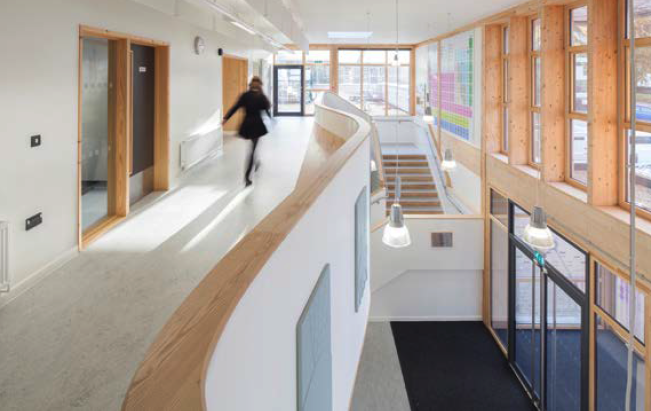- Over the past decade, embodied carbon emerged as a critical factor to consider in the planning and construction of buildings.
- Embodied carbon represents the millions of tons of Earth-warming carbon emissions released during the life cycle of building products.
The World Green Building Council estimates embodied carbon alone accounts for 11 percent of global annual energy-related emissions. Given the scale of the sector’s climate impact, it is imperative that owners, designers, builders, manufacturers, and policymakers lead the market by prioritizing this issue. As our understanding of embodied carbon has steadily increased, so has the urgency of reducing all carbon emissions.
This report stresses that now is the time to take decisive action using the best knowledge we have and, in parallel, to accelerate the sector’s learning curve and achieve rapid market transformation. A major challenge that hinders faster progress is “analysis paralysis.” Stakeholders need access to easily understandable scientific takeaways that cut through the noise and provide guidance on how to take immediate action in the building industry. On the other hand, we also must resist the urge to find a “silver bullet” by relying on a single material or design strategy to cut embodied carbon. We must take a critical eye to the science and find solutions that work, no matter where our leverage lies: in policy, on projects, or in product manufacturing.
The report identifies eleven questions that continue to hold back action on embodied carbon, and answers these questions with concise text and illustrations, providing key takeaways and action items as well as providing in-depth resources to be explored.
Building decarbonization requires collective industry action: forerunners are already demonstrating what is possible, but we need more leaders to push the boundaries to scale up swift and deep decarbonization. The industry is poised to make this leap, and there are substantial emissions reductions available today that are well within reach. Tools and guidance are widely available, low-hanging fruit have been identified, and new policies are creating greater market certainty. It is time for everyone to get on board to reduce embodied carbon. This report shows you how to get started.
Link to download the report HERE
Authors: Tracy Huynh, Chris Magwood, Victor Olgyay, Laurie Kerr, Wes Sullens
This article was originally published by the RMI and is republished with permission through the Creative Commons CC BY-SA 4.0 license.
Disclaimer: The articles expressed in this publication are those of the authors. They do not purport to reflect the opinions or views of Green Building Africa or our staff. The designations employed in this publication and the presentation of material therein do not imply the expression of any opinion whatsoever on the part Green Building Africa concerning the legal status of any country, area or territory or of its authorities.















